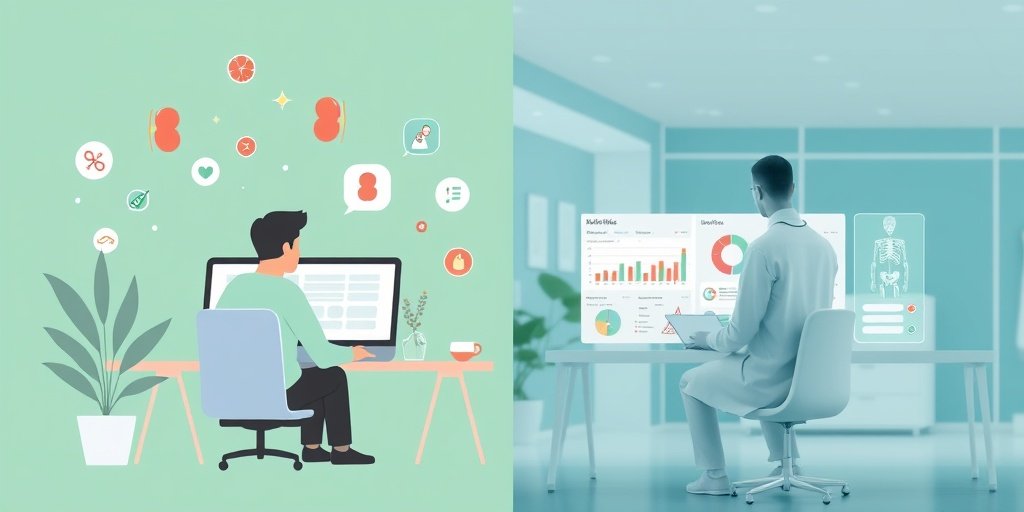⚡ Quick Summary
A recent study assessed the readability and availability of online materials regarding urolithiasis across 24 European languages, revealing that most patient-oriented resources are too complex for effective understanding. The findings highlight the need for simplification and the potential use of artificial intelligence to enhance patient comprehension.
🔍 Key Details
- 📊 Total articles analyzed: 723
- 🌐 Languages included: 24 official European languages
- 📈 Readability assessment tool: LIX formula
- 🏆 Best performing language: English (mean LIX score below 40)
- 🚨 Most difficult languages: Finnish, Lithuanian, Hungarian (LIX scores above 50)
🔑 Key Takeaways
- 📚 Online materials on kidney stones are generally too complex for patients.
- 💡 English resources were the most accessible, while Finnish, Lithuanian, and Hungarian were the hardest to read.
- 🔍 Readability scores indicate a significant gap in patient understanding.
- 🤖 Artificial intelligence could play a crucial role in simplifying medical information.
- 🌍 Increased awareness may improve adherence to preventive measures.
- 💰 Economic burden of urolithiasis could be reduced through better patient education.
- 📖 Study published in the Central European Journal of Urology.
- 🗓️ Publication year: 2025

📚 Background
Urolithiasis, commonly known as kidney stones, affects up to 20% of the population and is characterized by high recurrence rates. The complexity of this condition often leads to a strain on healthcare systems, making it essential for patients to access reliable and comprehensible information online. However, the readability of such materials is crucial for effective patient education and adherence to treatment.
🗒️ Study
This study aimed to evaluate the availability and readability of online resources related to urolithiasis across 24 European languages. Researchers translated the term “kidney stones” into each language and retrieved the first 50 search results. They excluded non-functional websites and focused on patient-oriented materials, assessing their readability using the LIX formula.
📈 Results
The analysis revealed that a total of 723 articles were included, with English yielding the highest number of results. Notably, English articles had a mean LIX score below 40, indicating they were easier to read. In contrast, Finnish, Lithuanian, and Hungarian materials had significantly higher LIX scores, classifying them as very hard to read. This disparity underscores the challenges patients face in understanding their condition through available online resources.
🌍 Impact and Implications
The findings of this study have significant implications for patient education in urolithiasis. The complexity of online materials can hinder patient understanding and adherence to treatment plans. By simplifying these resources and potentially integrating artificial intelligence for better readability, healthcare providers can enhance patient comprehension. This improvement could lead to better health outcomes and a reduction in the economic burden associated with urolithiasis.
🔮 Conclusion
This study highlights the critical need for accessible and comprehensible online materials regarding urolithiasis. The use of AI technologies to simplify patient-oriented information could significantly improve understanding and adherence to preventive measures. As we move forward, it is essential to prioritize patient education in the digital age to enhance healthcare outcomes.
💬 Your comments
What are your thoughts on the readability of online medical resources? How can we improve patient education in this digital era? 💬 Share your insights in the comments below or connect with us on social media:
A cross-language analysis of urolithiasis patient online materials: Assessment across 24 European languages.
Abstract
INTRODUCTION: Urolithiasis is a prevalent condition with several etiological factors, affecting up to 20% of the population and exhibiting high recurrence rates. Its strain on healthcare systems, exacerbated by high incidence and recurrence, often results in insufficient time for thorough diagnostics and counselling. Consequently, many patients seek easily accessible online sources of information. This study aimed to assess the readability and availability of online urolithiasis materials across 24 official European languages to compare readability across different source types.
MATERIAL AND METHODS: The phrase “kidney stones” was translated into all official European languages, and the first 50 search results for each language were retrieved. Non-functional websites, those requiring accounts or payments, and duplicates were excluded. Relevance was assessed using Google Translate to filter out results lacking medical information. Only patient-oriented materials were included for analysis. Obtained results were then classified by source category, and their readability was assessed using LIX formula.
RESULTS: A total of 723 articles were analysed. The English term yielded the highest number of results, followed by Spanish and Portuguese. Overall, the English articles performed best, being the only language with a mean LIX score below 40, which marks the threshold between “somewhat hard” and “hard” to read. Finnish, Lithuanian, and Hungarian materials had LIX scores significantly exceeding the threshold of 50, classifying them as “very hard to read” and among the most difficult to comprehend.A subgroup analysis revealed no statistically significant differences across the source classification.
CONCLUSIONS: Online materials on kidney stones are generally too complex for patients, limiting their understanding and treatment adherence. Simplification of patient-oriented materials along with artificial intelligence utilisation could enhance comprehension. Improved awareness may promote adherence to preventive measures and help reduce the incidence and economic burden of urolithiasis.
Author: [‘Tomczak W’, ‘Krajewski W’, ‘Grunwald K’, ‘Chełmoński A’, ‘Chorbińska J’, ‘Nowak Ł’, ‘Łaszkiewicz J’, ‘Gurwin A’, ‘Krajewska M’, ‘Małkiewicz B’, ‘Szydełko T’]
Journal: Cent European J Urol
Citation: Tomczak W, et al. A cross-language analysis of urolithiasis patient online materials: Assessment across 24 European languages. A cross-language analysis of urolithiasis patient online materials: Assessment across 24 European languages. 2025; 78:221-227. doi: 10.5173/ceju.2025.0045